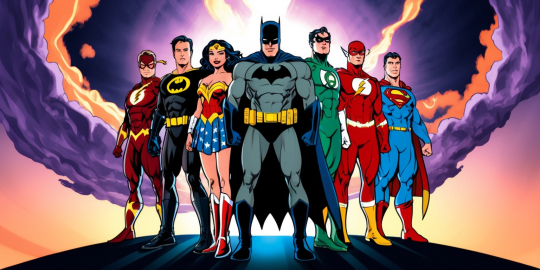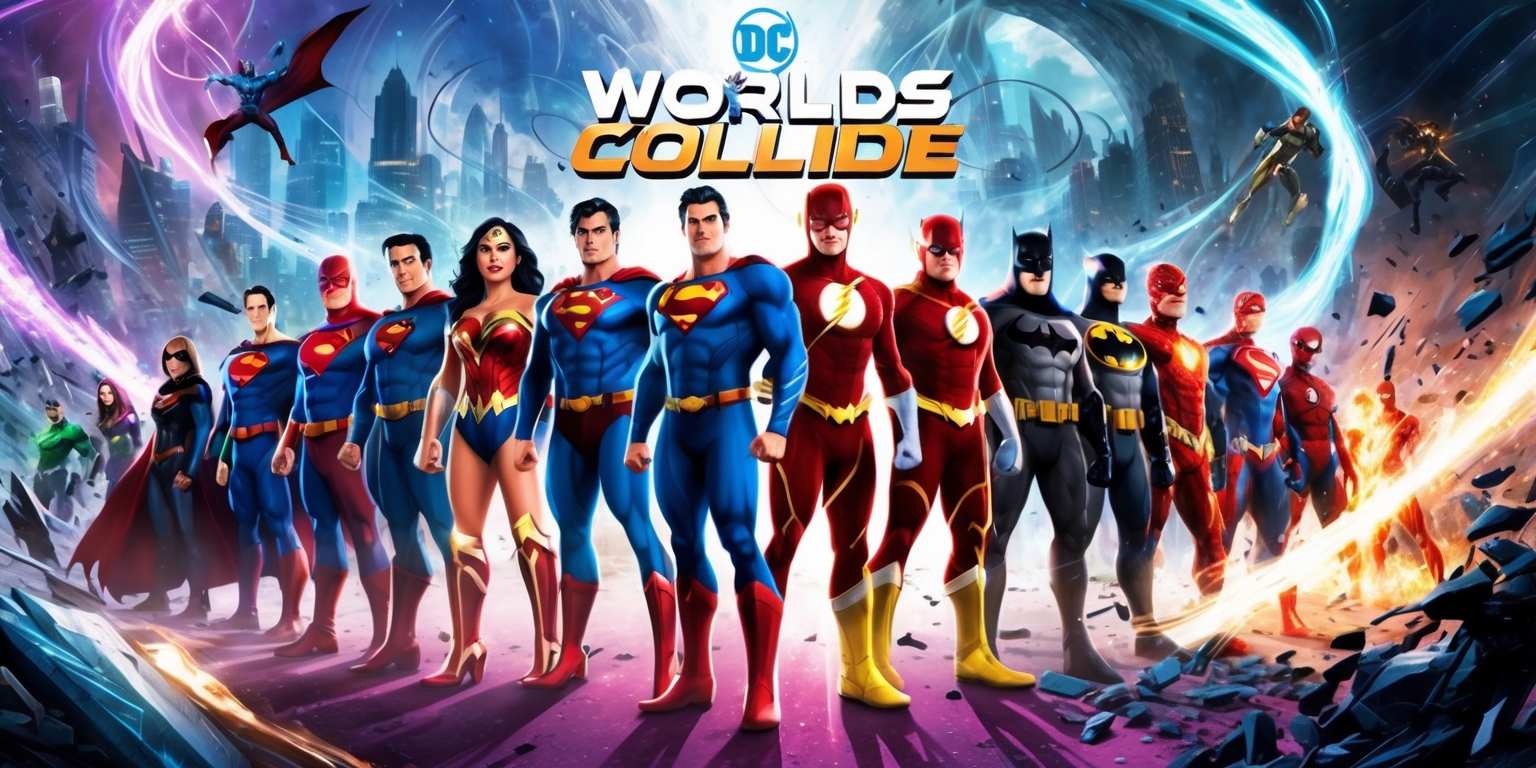
DC Worlds Collide ushers in a realm where meticulous team creation meets distinctive character abilities. In the fast-paced universe of this game, success "is not exclusively defined by accumulating the greatest amount" admired characters but by forging a cohesive unit that harmonizes offensive prowess, defensive resilience, and supportive tactics that bolster performance. As players immerse themselves in battles, the importance of assembling a team with optimal character synergies immediately becomes apparent. Mastery At its core, this game revolves around grasping not merely individual strengths but also how complementary abilities interact dynamically in simulated combat environments. Throughout this exploration, various aspects such as character roles, unique buffs, debuffs, and healing methods come into focus, offering insights that transcend standard strategies and inviting players to reimagine their approach to team development.
Building a Balanced Roster
The foundation of an exceptional team in DC Worlds Collide lies in balancing attributes across various roles. The game requires players to thoughtfully combine characters that serve as front liners, support units, and specialists who infuse additional effects during combat. For instance, characters with a robust passive ability tend to fare exceptionally well when paired with units that can sustain their viability through healing or protective mechanisms. This interplay highlights the necessity for planning beyond solitary strengths and emphasizes how each component fosters an environment where offense and defense work hand in hand. Investing in characters from different rarity levels, such as elite and epic, enriches the strategic tapestry. The emphasis on An evenly skilled team not only improves overall survival chances but… also enhances the overall offensive dynamics on the battlefield.
Mastering Synergistic Team Arrangements
Success in DC Worlds Collide is greatly augmented by the careful arrangement of character synergies. Certain character combinations unlock potentials that far surpass their individual capabilities, creating powerful effects during key moments in battle. Integrating characters with synergistic skills means that as one character accumulates buffs or debuffs, others benefit simultaneously, creating a multiplier effect that tilts the scales toward victory. For example, characters that benefit from continuous status effects like healing or shields find perfect allies among commanders whose skills further extend these benefits. Through this interplay, every minute decision regarding character selection and placement matters profoundly. This system challenges players to experiment with various pairings, thus transforming every combat encounter into an opportunity to refine their knowledge of team-induced dynamics and emergent tactical strategies.
Understanding Unique Character Roles
Characters in this universe each play specialized roles "which enhance the overall performance of a" team. Frontline characters with durability and self-enhancing abilities set the stage by engaging and absorbing damage, while others provide essential support by healing and fortification. For instance, when a character builds strength over time through his passive abilities, it creates an opening for teammates who can mitigate damage or refresh his vitality. At the same time, offensive units not only inflict primary damage but do so in a way that synergizes well with allies who can capitalize on their critical hits and supporting debuffs. The distinct roles, whether in assault or support, form the mosaic that is every successful team strategy, ensuring that each encounter is approached with a multifaceted arsenal of tactical options.
Enhancing Offensive and Defensive Capacities

A crucial aspect of thriving in DC Worlds Collide lies in harnessing both offensive and defensive capacities simultaneously. Characters that lead the charge with formidable attacks become significantly stronger with the support of defensive buffs that reduce damage intake. Many units come with abilities that not only enhance their own performance but also extend protective benefits to the entire team. By combining aggressive strategies with shields and healing effects, players can maintain a balance where relentless attacks are met with sustainable defensive measures. This dual focus is particularly vital during elongated battles, where survival hinges on the ability to absorb damage while steadily depleting the opponent's strength. The interplay of these aspects fosters a dynamic combat experience that rewards players for foresight and adaptability in managing both sides of the strategic coin.
Specialized Buff Mechanics and Healing
The mechanics of buffing and healing are integral to the success of any formation in this game universe. Certain characters excel when their abilities are augmented by other team members who provide supportive enhancements such as healing or damage reduction. In combat, when health regeneration intersects with attack buffs, the effect can be game-changing, transforming a precarious situation into one of controlled dominance. Some characters even possess skills that scale off the current state of their own buffs and debuffs, making the timing and combination of abilities critical to overall success. This aspect of gameplay forces players to not only focus on creating a strong offense but also invest heavily in ensuring that their team remains resilient enough to withstand continuous impact during skirmishes, balancing risk with well-timed strategic interventions.
Exploiting Elemental Effects: Burn in Focus
The elemental effect labeled as Burn emerges as a significant tactical tool within DC Worlds Collide. In this system, applying Burn stacks to adversaries serves as a method for incrementally increasing damage output until a threshold is reached. Once this critical mass of Burn stacks is achieved, the enemy endures damage based on a percentage of the primary attacker's strength, magnifying the overall offensive impact. This setup encourages a rapid and continuous application of the effect, blending the need for sustained pressure with effective time management during combat bouts. Characters who are equipped to target multiple foes simultaneously can accelerate the accumulation of Burn, ensuring rapid activation and damage amplification across the board. The strategic use of Burn necessitates not just raw aggression but also calculated dissemination of stacks to optimize performance against varying enemies.
Utilizing Debuff Strategies with Poison
Poison forms another pivotal strategy where the slow and steady accumulation of stacks influences the battle landscape significantly. Unlike the immediate detonation of certain effects, Poison creates a more sustained pressure by deducting a percentage of a character's attack power as damage over time, while simultaneously restricting healing capabilities on the adversary. This gradual erosion demands that opponents manage long-term survivability against wearing attacks. Characters geared towards inflicting and capitalizing on Poison accumulate these stacks to reach a total that continuously undermines the enemy’s overall capacity to recover. In certain team compositions, an individual specializing in poison application serves as a cornerstone of the overall strategy, highlighting the importance of consistent damage output paired with complementary support units who boost this attribute. Through careful planning and execution, Poison transforms into a cornerstone element of strategic depth in gameplay.
Interplay of Legendary and Elite Units
The integration of legendary characters with their elite and epic counterparts creates layers of synergy that expand tactical possibilities in the game. While legendary figures often take on leadership roles with powerful front-line abilities, elite units provide versatility and specialized support that round out a full-scale combat formation. By pairing these units, players not only gain from the unique attributes inherent to each character but also from the way their skills interact throughout the battle phases. The synergy across different character tiers ensures that no single aspect dominates the team’s strategy; instead, a cohesive bond is nurtured where each unit supports the other, whether through enhancing critical metrics, applying status effects, or even granting defensive shields. This collaborative dynamic reinforces the importance of thoughtful investment and long-term progression in constructing teams that are both formidable and flexible.
Tactical Adaptation Through Active Gameplay
In a game driven by fast-paced encounters and ever-evolving battle scenarios, the capacity for tactical adaptation is indispensable. Each encounter may present a unique combination of enemy configurations and battlefield challenges, compelling players to recalibrate their strategies continuously. Active gameplay encourages the exploration of various synergies, prompting players to experiment with new pairings and reassign roles based on the current context. This dynamic interaction between planned strategy and on-the-fly adjustments enhances the depth of gameplay and cultivates a more intuitive approach to combat management. Players who effectively tailor their team compositions based on ongoing in-battle developments can consistently leverage minor advantages that accumulate over time, ultimately tipping the balance in their favor as they progress through increasingly challenging opponents.
Reward Funding and Team Progression
The economic and reward systems implemented in DC Worlds Collide significantly influence how teams evolve over time. Players are encouraged to keep active by redeeming various codes and participating in events that disperse valuable rewards. These resources are crucial for upgrading characters and unlocking additional abilities, ensuring that the team continues to refine its potential as challenges escalate. The internal economy The game's mechanics are meticulously calibrated to support a growth-driven approach, where each successful battle or strategic decision reaps rewards that can be reinvested into team composition. In this way, strategic decisions are continuously supported by tangible progress markers, reinforcing the notion that effective management of in-game resources is just as vital as recognizing optimal character synergies. The interplay between economic strategy and tactical deployment opens myriad possibilities for team advancement throughout the journey.


